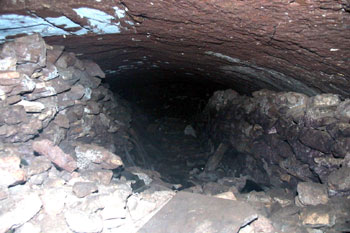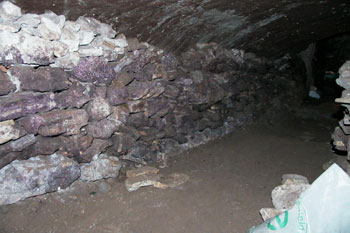The Background
Early Research
The First Season (2002)
The Archaeological Investigations of 2003
Conclusions
The First Season (2002)
The first season began on July 24, 2002 and ended six weeks later
(July 30). At the beginning of the work, fragments of tufa,
travertine, broken tufa steps, glass shards, metal bands, and broken
brick and concrete extended to the top of the barrel vault of the
Excavation Area. It took most of the excavation season to
remove this rubble.
At the end of the season, however, the excavators had opened a
central corridor that extends to the lower section of the
post-antique south wall. The floor of beaten earth thus exposed
promised easy access to the underlying archaeo- logical strata.
 |
|
 |
| Fig. 8. The EA before
excavation. |
|
Fig. 9. The EA after
excavation. |
As proved by the gradual curve of its lateral walls on the
new excavation plan, this now accessible open area was originally
part of the ambulacrum. The vault, however, was either
late-antique or medieval. When the level of the detritus in the
Excavation Area was slightly lower than at present, someone cut
a small hole in the post-antique south wall. Tufa and marble
fragments, among them, an ancient white marble impost block, were
later used to close this opening.
Mixed with the modern detritus, the small finds all come from
surface of the earth fill.
 |
|
|
| Fig. 10. The hole in the south post-antique
wall. |
